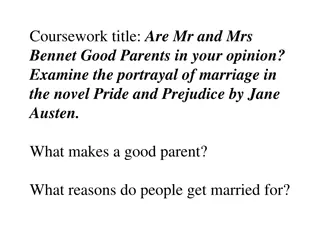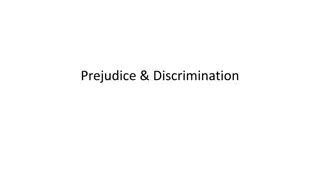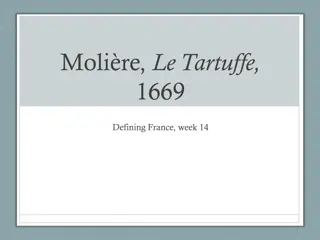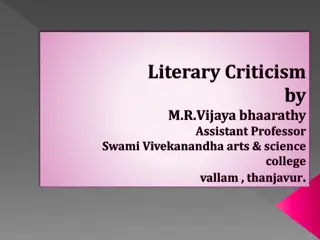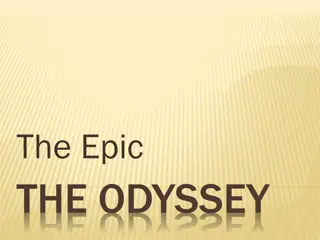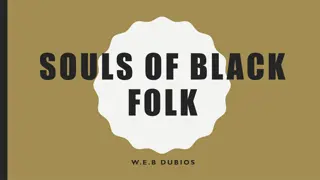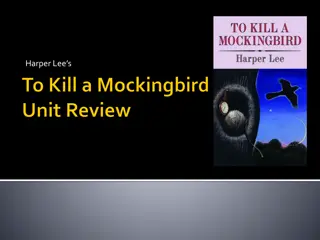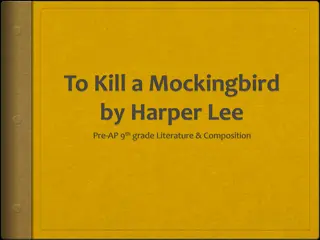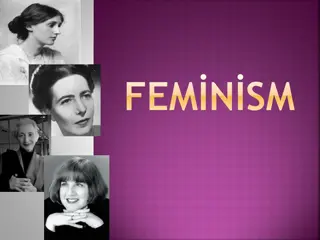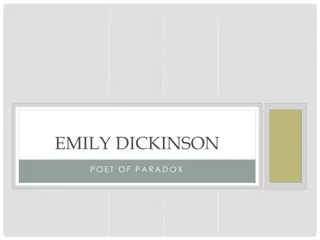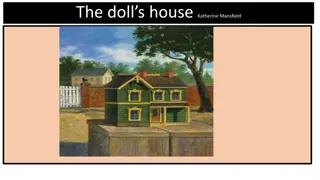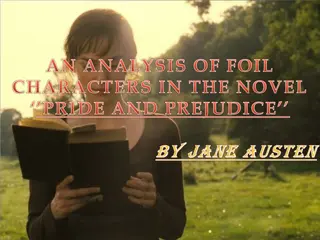Literary Analysis of "Pride and Prejudice" Characters and Themes
Explore the key literary terms such as protagonist, antagonist, circumlocution, motif, and aphorism in Jane Austen's "Pride and Prejudice". Understand the roles of characters like Elizabeth and Darcy, Mr. Collins, and delve into themes like love, class, and societal norms depicted in the novel.
Download Presentation

Please find below an Image/Link to download the presentation.
The content on the website is provided AS IS for your information and personal use only. It may not be sold, licensed, or shared on other websites without obtaining consent from the author. Download presentation by click this link. If you encounter any issues during the download, it is possible that the publisher has removed the file from their server.
E N D
Presentation Transcript
Pride and Prejudice Literary terms GCSE English Literature 1 18/09/2024
Elizabeth and Darcy Protagonist the chief character in the novel, now almost synonymous with hero or heroine , who may be locked in a struggle with the antagonist. Antagonist the opponent of the protagonist, the chief character in the novel, where two figures are engaged in a struggle with each other. 2 18/09/2024
Mr Collins. Circumlocution - words and descriptions which take roundabout ways of approaching or hinting at a subject rather than addressing it directly, either for comic or ironic effect, or to avoid embarrassing topics. Caricature - a grotesque or ludicrous rendering of a character, achieved by the exaggeration of personality traits. 3 18/09/2024
Story teller Centre of consciousness - technique of telling the story wholly or chiefly from the point of view of one individual, though the narrative is still third-person. Omniscient narrator - the narrator of a story who knows in a godlike way every detail of the characters lives, motives, intentions, desires, thoughts, actions 4 18/09/2024
Theme and Motif Theme the abstract subject of a literary work: its central idea or ideas. Motif - a topic raised at several points in a literary work, of lesser significance than a theme. Dancing, walking, reading, letter-writing, clothes and food all serve as motifs in Pride and Prejudice . Characters are distinguished from each other by their attitudes to such interests or activities. 5 18/09/2024
Aphorism Aphorism - a generally accepted truth or principle expressed in a short and pithy sentence. It is a truth universally acknowledged, that a single man in possession of a good fortune, must be in want of a wife. 6 18/09/2024
Authorial intervention and implied reader Authorial intervention - a moment in a narrative when the narrator talks directly to the reader. Implied reader every text contains features which hint at or imply the kind of reader at which it is aimed. These features may be to do with subject matter, tone of voice, assumptions as to shared interests, knowledge 7 18/09/2024
Irony, parody and satire Irony - saying one thing while you mean another Parody - an imitation of a specific work of literature, or literary style or genre, devised so as to ridicule its characteristic features. A good example is Mr Collins s letter. Satire - literature which exhibits or examines vice and folly and makes them appear ridiculous or contemptible. 8 18/09/2024
Finally Foreshadow - the capacity of a narrative to hint at future events. Epistolary novel - a novel in which the story is told entirely through letters sent by those participating or observing events. Note! Pride and Prejudice is not an epistolary novel, but it does contain many letters. 9 18/09/2024
This powerpoint was kindly donated to www.worldofteaching.com http://www.worldofteaching.com is home to over a thousand powerpoints submitted by teachers. This is a completely free site and requires no registration. Please visit and I hope it will help in your teaching.









